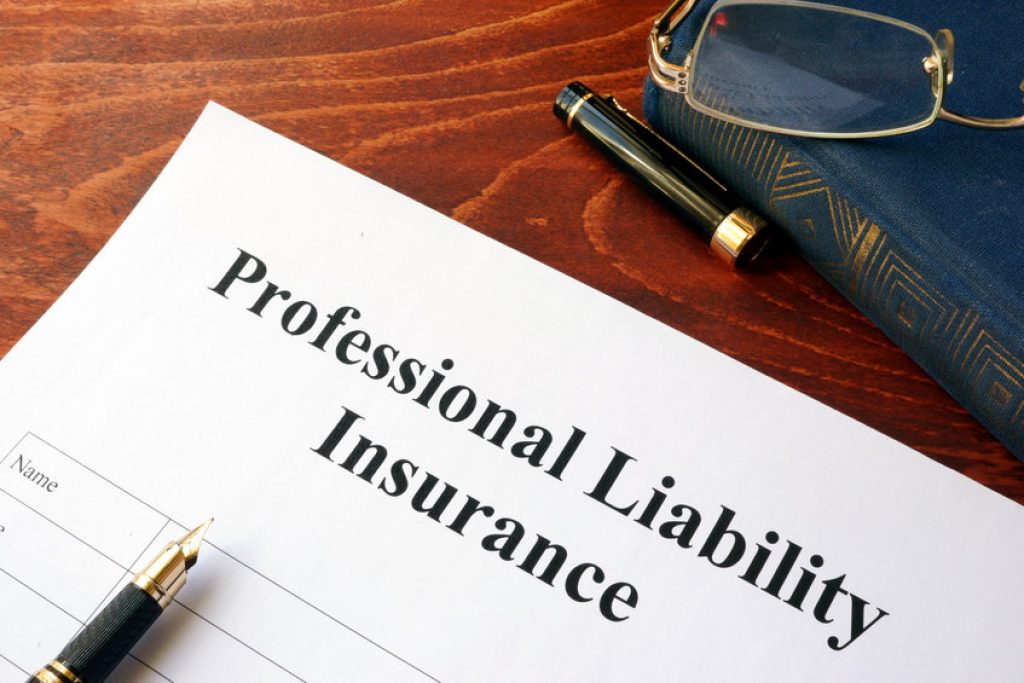Business Insurance Calculator – Cost Estimator
Welcome to our calculator that can help you determine the monthly cost of your main business insurance policies.
Please note that this is just a way to estimate the possible levels of charges. Each insurance company has its own way of quoting, and you must make sure to get the final prices from your agent, broker or insurance company.
Keep in mind that without insurance, you may end up as being personally responsible for settling any claim that is made against your business. The real question is not whether you can afford insurance, but whether you can afford not to have it.
Business Insurance Premium Calculator
How to use the calculator – quick guide
There are simple drop-down boxes where you can select whether you will be looking for a specific type of insurance. The choices have been carefully made to include the most common and important types of insurance cover that almost all businesses should have.
- Either select your choice based on the probable level of risk an insurance company would assign, or select NO if you have decided to skip this type. You can always come back to change your selections.
- We will explain further down much more about how most companies arrive at their assessment of risk, and set their premium levels accordingly.
As you make each selection, the calculator automatically estimates the likely premium and shows you the individual policy cost estimates, plus the running total. You can go through each of those steps as many times as you like, to see what is the best option for you.

General Liability Insurance
General Liability insurance provides protection for your business against claims of personal injury or property damage to third parties that may occur in the course of your business activity.
The claims may arise from events that happen on your own business premises, or when you are conducting your business in another location. It is sometimes referred to as “commercial general liability” or “CGL” insurance.
When shopping for general liability insurance, it’s essential to consider the specific needs of your business operations. If you are exposed to higher risks, for example if you have a high volume of people visiting your place of business, consider raising the risk level.
Lower risk businesses: for example ones that provide services remotely, such as an E-Commerce site, Content Creator, Social Media services or Software Developer, Photography Store, Retail Store, Fabric Store, Bookstore, Perfumery
Higher risk businesses, for example, if you run a business such as a Bakery, Nightclub, Car Wash and Auto Detailing Service, you will have more risk because customers and the public have open access to your premises.
Choose what you think is the most likely level that any insurance company would set.
Back to the Business Insurance Calculator
What does General Liability insurance cover?
General Liability covers you in case a claim is made by a “third party” – that is someone who is not an employee or owner of your business, but who suffers an injury or incurs damage as a result of your business operations.
Examples of situations where a third party might make a claim against your business include:
- A person slips in your store on the wet floor and falls, sustaining some bodily injury or harm to their property. Note that the person does not have to be a customer. Anyone who has stepped into your store is in your domain and you have a legal requirement to provide a safe environment
- A delivery driver is injured while making a delivery to your store
- A customer’s car is damaged while it is parked in your store’s parking lot
Bodily injury claims are claims made by third parties for physical harm suffered as a result of an incident that occurred on your property or as a result of your operations.
Property damage claims are claims made by third parties for damage to their property that occurred in your location or as a result of your operations.
It’s also important to know that general liability insurance typically doesn’t cover any intentional acts, or if the business was aware of the potential danger and didn’t take the appropriate action to prevent it.
It also doesn’t cover any damages caused by professional services, so if you provide professional services, you will require the separate PL or E&O policy.
A “third party” in the context of general liability insurance refers to someone who is not an employee or owner of your business, but who is affected by your business operations. This includes customers, vendors, and other non-employees who may be on your business premises.
If a member of your own family, who is not an employee or owner of your business, were to slip and fall on a wet tile while on your business premises, they would also be considered a third party. In this case, they would be able to make a claim against your business for any injuries sustained as a result of the incident.
Back to the Business Insurance Calculator ⬆
How do most insurance companies compute GL premiums?
Insurance premiums for General Liability are typically calculated based on several individual factors, including:
- The nature and type of business and its operations
- The number of employees and the extent of their activities
- Your business’s past loss history
- Your business’s exposure to liability claims
It’s also good to review the policy limits, the maximum amount of money the insurance company will pay out in case of a claim, so it’s important to make sure that the limits are sufficient to protect your business.

Back to the Business Insurance Calculator ⬆
Professional Liability insurance
Professional Liability insurance (PL), also known as Errors & Omissions insurance (E&O insurance), covers claims alleging negligence or wrongful acts in your business services.
Examples of lower risk businesses are Amazon FBA sellers, Dog walkers and pet sitters, Freelancers, Tennis Coaches, Swimming teachers, Dance Instructors, Party Equipment Rentals, Errand services, Locksmiths, Drama teachers, Personal Chefs, Wedding Officiants and Animal Rescue Services,
Other businesses that could be judged as having higher levels of risk for E&O claims because it is more directly exposed to possible claims coming from customer dissatisfaction. These include:
Handyman, Solar Panel contracting, Roofing contracting, Fence Installation, Plumbers, Painters, Electricians, Glaziers, Carpenters, Concrete Contractors, Field Service Technicians, Irrigation Installation, Sauna Installation, Cabinet Makers, Engine Repair, and Furniture delivery.
The type of business that faces the highest possible risk of claim is one that makes some physical contact with a customer. In such interaction, there is the danger of a claim being made of physical injury. Some of the types of business that would need extra cover include:
Health coaches, Yoga teachers, Estheticians, Teeth Whitening services, Body Sugaring services, Permanent makeup artists, Doulas, Hospices, Tattoo Parlors, Lifeguards, CrossFit Coaches and Hookah Lounges.
There can be several levels of risk in one business. For example, suppose you’re a retail store that is also providing installation services and you damage the customer’s property during the installation. In that case, general liability insurance will not cover that, but professional liability insurance will.
It’s important to keep in mind that not all professional liability policies are the same. The coverage, limits, and exclusions can vary depending on the insurance company and the policy you have chosen. Read carefully and understand the policy to know exactly what it does and does not cover, and make sure it matches your business needs and exposure to risk.
E&O insurance can provide coverage in cases where a customer claims that you gave incorrect advice. This type of coverage is sometimes referred to as “professional advice liability” coverage.
Back to the Business Insurance Calculator
How do most insurance companies compute E&O premiums?
Professional liability insurance cost is usually calculated based on:
- The type of profession and scope of services provided
- Your business’s claims history and loss ratio
- Relevant industry factors and trends

Back to the Business Insurance Calculator ⬆
Commercial Property Insurance
There are different types of property insurance policies available, including:
- Building and contents insurance, which covers damage to the building itself as well as the contents inside, such as furniture, equipment, and inventory.
- Business interruption insurance, which covers lost income and additional expenses if your business is unable to operate due to a covered loss.
- Equipment breakdown insurance, which covers losses due to mechanical or electrical breakdown of equipment.
It’s important to keep in mind that property insurance policies typically have exclusions and limits, and the coverage, limits, and exclusions can vary depending on the insurance company and the policy you have chosen.
It’s important to review the policy and understand what is and is not included in the policy.
If your business carries stock for resale, property insurance policies typically have limits on the amount of coverage for inventory, and these limits may not be sufficient to cover the full value of your inventory. In this case, you may need to purchase additional coverage to ensure that your inventory is fully protected.
Back to the Business Insurance Calculator
How do most insurance companies compute Commercial Property premiums?
- The location and type of property
- The value of the property and its contents
- Your business’s past loss history
- Your business’s risk management practices
AI-Driven Business Insurance Cost Estimator: Precision and Adaptability
The most advanced business insurance cost estimator leverages artificial intelligence (AI) to provide businesses with accurate and personalized insurance cost predictions. This AI-driven tool integrates a vast array of data points, including industry-specific risks, company size, location, and historical claims data, to deliver precise estimates. It surpasses traditional methods by adapting to real-time changes in market conditions and regulatory landscapes, ensuring that businesses receive the most current and relevant insurance cost information.
Furthermore, its predictive analytics capabilities can foresee potential risks and suggest optimal insurance coverages, making it an invaluable asset for businesses seeking to mitigate risk while controlling insurance costs. This advanced approach to estimating insurance costs represents a significant leap in the intersection of technology and business finance management.
How close will the calculator get to the likely cost of cover?
The calculator is just a guide, based on as much information as you have provided. We base our calculation on industry standards, but they are simply estimates, and you should only use this as a starting point in your shopping.
An insurance company will typically consider a range of factors when determining a premium rate, including the kind of cover, the amount of cover requested, the location of the insured property or business, and your claims history. The claims history is a key factor that insurance companies consider when underwriting a new policy, as it provides information about the risk of future claims.
Your premium history may also be taken into account, but it is typically considered along with other factors to determine the overall risk profile.
Insurance companies encourage loyalty so if you have been insuring your business with one company, you may find that quotes from new insurers will always start off higher.
Don’t let this be the only factor that determines your choice. There are many other reasons to choose one company ahead of another, and premiums are not always the most important one.
Back to the Business Insurance Calculator ⬆
What about Workers Compensation?
We cannot calculate your business’ likely Workers Compensation cost, since this is different depending on many specific factors, including which state your business is located in, the number of employees and several others.
Workers’ compensation insurance is regulated by each state, and the premium rate is determined based on a formula that takes into account factors such as the type of business, the number of employees, and the expected costs of claims.
The formula may also take into account other factors such as the experience of the business, the payroll, and the industry classification.
However, in some states, the claims history of a business may also be considered when determining the workers’ compensation premium rate.
This is known as “experience rating” and is used to adjust the premium rate based on a business’s actual claims experience, rather than relying solely on the formula.
For example, suppose a business has a high number of workers’ compensation claims. In that case, the premium rate may be increased to reflect the higher risk.
Conversely, if a business has a low number of claims, the premium rate may be reduced. Experience rating can provide a more accurate reflection of a business’s risk and can help to ensure that the premium rate is equitable for all businesses.
While workers’ compensation insurance premium rates are typically based on a formula in most states, some states may use experience rating to adjust the rate based on a business’s claims history.
The availability of experience rating and the specific factors considered may vary by state, so it’s not possible for us to calculate your likely Workers Compensation costs.
Experience rating is used in many states to adjust workers’ compensation insurance premium rates based on a business’s claims history.
However, the specific details of the experience rating system, including the factors considered and the methods used to calculate the rate, can vary by state.
If you are unsure whether experience rating is used in your state, it is best to contact your insurance company or state insurance department for more information.
You can find information on the workers’ compensation programs in each state, as well as links to the relevant state departments and agencies that administer these programs on the U.S. Department of Labor website.
Back to the Business Insurance Calculator ⬆
How does a business insurance cost estimator work?
A business insurance cost estimator typically works by taking into account various factors that impact the cost of insurance, such as the type of business, the location, the size of the business, the level of coverage needed, and the business’s claims history.
Based on this information, the estimator uses a series of algorithms and risk models to calculate an estimated cost for the desired insurance coverage.
The specific calculations used by an insurance cost estimator may vary depending on the provider and the type of coverage being estimated.
For example, an estimator for liability insurance may focus on the types of risks a business faces and the likelihood of those risks resulting in a claim, while an estimator for property insurance may focus on the value of a business’s assets and the likelihood of damage or loss.
It is important to keep in mind that insurance cost estimators are just that – estimators.
The actual cost of insurance may vary depending on a number of factors, and it is always best to get a personalized quote from an insurance provider to get an accurate idea of what your business insurance will cost.


